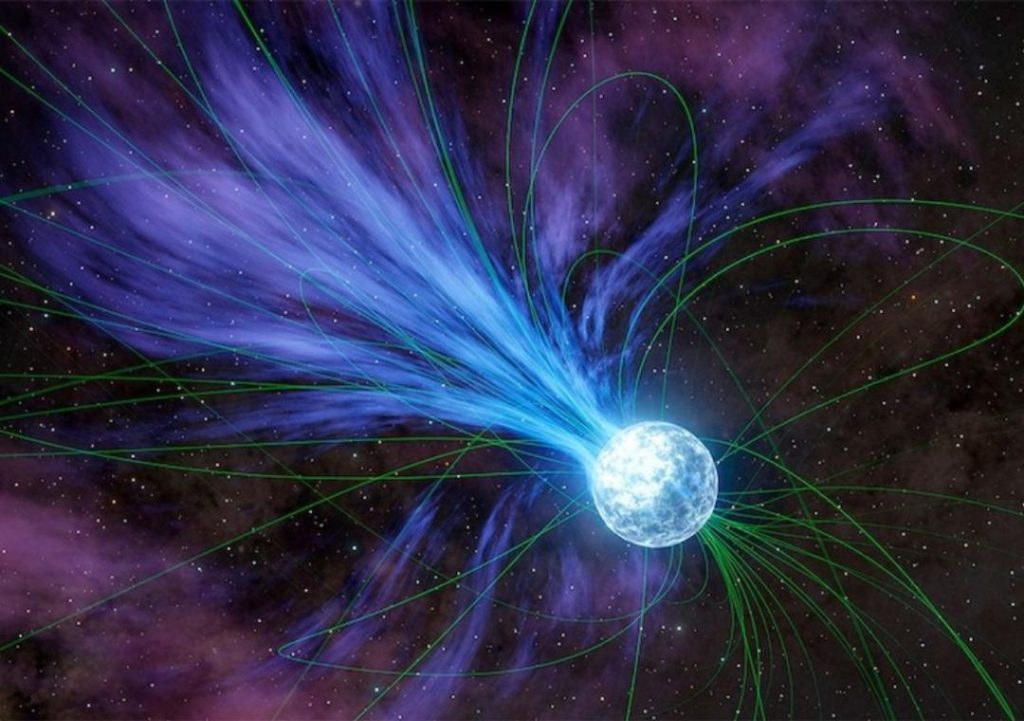
Gold & Platinum created through neutron stars’ explosions: Study
For centuries, humans have been fascinated by the origins of precious metals like gold and platinum. Where did they come from? How were they formed? Scientists have long been searching for answers to these questions, and finally, a study led by Columbia University student Anirudh Patel has shed light on the mystery. According to the study, magnetars, or highly magnetized neutron stars, helped create these elements in a cosmic event over 20 years ago.
Magnetars are incredibly powerful objects that are formed when a massive star collapses under its own gravity. They are characterized by their extremely strong magnetic fields, which are trillions of times stronger than the Earth’s magnetic field. When a magnetar explodes, it releases a massive amount of energy in the form of flares, which can be detected from Earth.
The study, which was published in the journal Nature, analyzed data from a magnetar explosion that occurred in 1998. The explosion was detected by NASA’s Compton Gamma Ray Observatory, which was launched in 1991 and operated until 2000. The data showed that the explosion released a large amount of heavy elements, including gold and platinum.
The researchers used computer simulations to model the explosion and determine how the elements were formed. They found that the explosion created a massive amount of energy, which heated up the surrounding material to incredibly high temperatures. At these temperatures, the atoms were able to fuse together to form heavier elements, including gold and platinum.
The study’s findings have significant implications for our understanding of the origins of precious metals. For centuries, humans have believed that gold and platinum were formed through geological processes, such as the collision of tectonic plates. However, the study suggests that these elements may have been formed in a more exotic way – through the explosions of magnetars.
The idea that magnetars could be responsible for the formation of precious metals is not new. In the 1960s and 1970s, scientists proposed that magnetars could be the source of these elements. However, the idea was largely forgotten until the study published by Patel and his team.
The study’s findings also have implications for our understanding of the universe. Magnetars are incredibly powerful objects that are thought to play a crucial role in the formation of heavy elements. The study shows that these objects can create a wide range of elements, including gold and platinum, which are essential for life on Earth.
The study’s findings also raise questions about the frequency of magnetar explosions. The researchers estimate that magnetars explode approximately once per decade in the Milky Way galaxy, which is the galaxy that contains our solar system. This means that there may be a significant number of magnetar explosions occurring in the universe at any given time.
The study’s findings also have implications for the search for life beyond Earth. The presence of gold and platinum on other planets could be a sign of the presence of magnetars in the past. The study’s findings could also help scientists to better understand the conditions necessary for life to emerge on other planets.
In conclusion, the study led by Patel and his team has shed new light on the origins of precious metals like gold and platinum. The findings suggest that these elements may have been formed through the explosions of magnetars, which are incredibly powerful objects that are thought to play a crucial role in the formation of heavy elements. The study’s findings also have implications for our understanding of the universe and the search for life beyond Earth.






